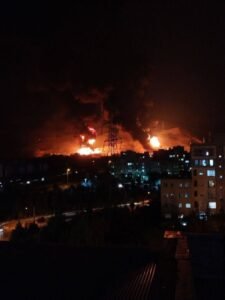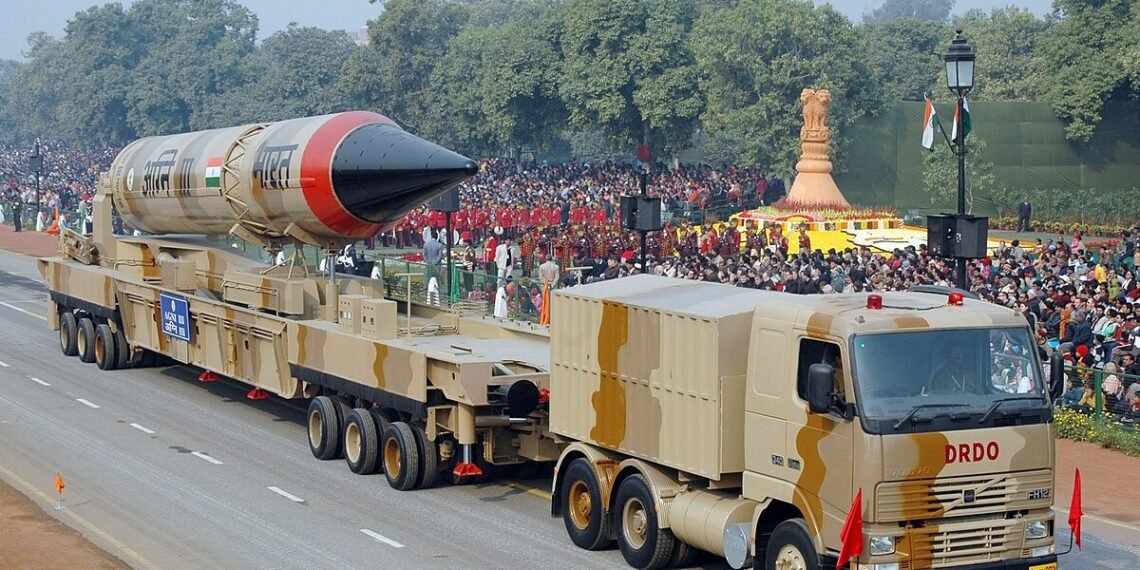The global nuclear arsenal grew in 2024, reversing decades of disarmament. With 9,614 active warheads, SIPRI warns of an accelerating multi-front nuclear modernisation race.
BY PC Bureau
India now possesses more nuclear warheads than Pakistan, as regional powers continue to expand and modernize their nuclear arsenals amid deepening geopolitical tensions. According to the Stockholm International Peace Research Institute (SIPRI) Yearbook 2025, released Monday, India holds an estimated 180 nuclear warheads, slightly ahead of Pakistan’s 170, while China’s total stands at 600—more than triple India’s count.
SIPRI noted that India modestly expanded its arsenal in 2024, focusing on the development of advanced delivery systems. Among the key developments are canisterised missiles, capable of being moved with warheads already mounted, potentially enabling quick deployment during peacetime. These systems, the report suggests, could eventually carry multiple warheads per missile, a capability that would mark a major shift in India’s nuclear posture.

READ: “Not an Inch of Tribal Land to Adani”: Bodo Resistance Mounts Against Thermal Plant
In contrast, Pakistan continued to accumulate fissile material and enhance its missile capabilities, indicating that its arsenal may see significant growth over the next decade. Both countries, the report states, are working on multiple independently targetable reentry vehicle (MIRV) technology, long used by major nuclear powers to strengthen second-strike capability.
The most recent SIPRI yearbook records a modestly increased estimate for the size of the Indian nuclear arsenal while keeping the estimate for Pakistan unchanged versus last year. China’s arsenal continues to grow, in line with US government estimates. https://t.co/xEWQqNMbn6 pic.twitter.com/YIBI8FPpGY
— Christopher Clary (@clary_co) June 16, 2025
SIPRI also referenced India’s Operation Sindoor—a 2024 military campaign that allegedly involved strikes on nuclear-linked infrastructure. While details remain classified, the report warned that such operations, when combined with misinformation, “risked transforming a conventional conflict into a nuclear crisis.”
Globally, the United States and Russia continue to hold the largest stockpiles, with 5,177 and 5,459 warheads respectively, though many are retired. However, China, India, Pakistan, North Korea, and Russia are actively modernising dual-capable missile platforms, which can deliver both conventional and nuclear payloads.
India’s nuclear posture, once focused solely on Pakistan, is gradually shifting. The report highlights a growing emphasis on long-range strike capabilities aimed at China, indicating a strategic recalibration. SIPRI also noted signs of India moving away from its earlier policy of storing warheads separately during peacetime, particularly through submarine-based patrols and the canisterisation of missiles.
 READ: “Get Out of Tehran”: Trump’s Chilling Warning as He Cuts G7 Visit Short
READ: “Get Out of Tehran”: Trump’s Chilling Warning as He Cuts G7 Visit Short
The report further revealed that between 2020 and 2024, India ranked among the top five arms importers globally, alongside Ukraine, Qatar, Saudi Arabia, and Pakistan. Together, these five nations accounted for 35% of all global arms imports, underscoring the intensifying arms race in South Asia and beyond.
Key Figures & Developments
- India now holds 180 nuclear warheads as of January 2025, surpassing Pakistan’s 170 and is advancing ‘canisterised’ missiles capable of deploying nuclear warheads—even multiple warheads once fully operational
- China leads the region with approximately 600 warheads, growing at a rate of ~100 annually since 2023. It has completed around 350 new intercontinental ballistic missile (ICBM) silos
- Global totals now exceed 12,241 warheads, with roughly 9,614 in military stockpiles and about 3,912 deployed—2,100 of which are on high alert
Modernisation & New Capabilities
- Nations such as China, India, Pakistan, North Korea, Russia, France, the UK, and the US are modernising dual-capable missile systems that can carry both conventional and nuclear payloads
- MIRV (Multiple Independently Targetable Reentry Vehicle) capabilities are proliferating: China already fields MIRVed missiles, while India, Pakistan, and North Korea are developing their own
Shifting Strategies
- India’s nuclear posture appears to be shifting—canisterisation, integration of SSBN (nuclear-powered ballistic missile submarines) patrols, and ready-launch systems suggest peacetime mating of warheads with missiles
- The emphasis is also broadening: while Pakistan is India’s primary nuclear focus, India is increasingly prioritising longer-range weapons, presumably to include strategic deterrence against China
Regional Nuclear Flashpoints
- Pakistan continues to develop new delivery systems and stockpile fissile materials, signalling a potential rise in warhead numbers over the next decade
- The SIPRI report flags India’s Operation Sindoor, an alleged strike on Pakistani nuclear-linked infrastructure in 2024, asserting that when combined with misinformation, it could escalate conventional warfare toward nuclear crisis boundaries
Wider Security Implications
- The explosion of global stockpiles and rapid missile modernisation—including AI-supported decision systems—raises concerns of accidental or miscalculated escalation
- With the expiry of key arms control treaties and dwindling international restraints, SIPRI warns that the post-Cold War trend of nuclear reductions has reversed













